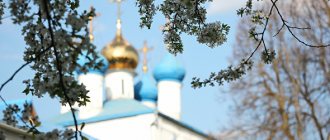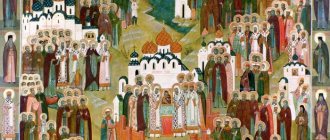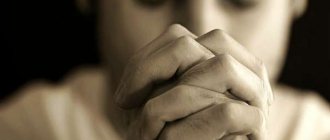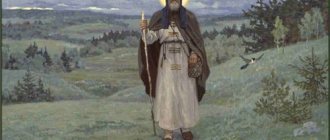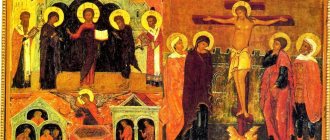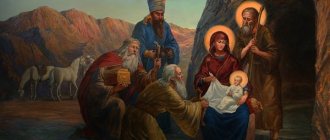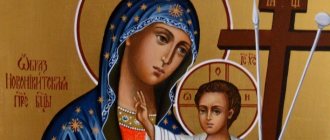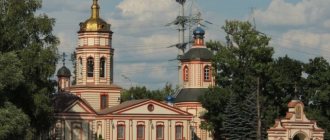Many important church-historical events, reflecting the true essence of biblical mythology, are clearly illustrated in ancient Russian icons. The recreation of their unique sacred images on a solid surface, which makes up the interior decoration of any Orthodox church, makes an indelible impression on every person, prompting him to display the highest aesthetic feelings and noble deeds.
However, among the huge number of revered shrines that are part of the national and cultural heritage of modern society, special attention should be paid to the icon of the Exaltation of the Holy Cross. Its plot tells about an important ancient legend that was associated with the crucifixion of Jesus Christ.
Origin story
The lost cross was found with the direct participation of Queen Helena, and then only after a grueling search. This happened in 326. Her son, the courtier Constantine, set out to build churches in the Palestinian lands where the Savior lived. But for this he needed a crucifixion, on which Christ was given a painful execution.
The shrine was hidden in one of the caves, covered with earth. When the entrance was cleared, not one, but three crosses were found in the depths. As Bishop Macarius suggested, each of them was brought to the sick. And the one who healed all ailments was accepted by the honest and life-giving, true Cross.
Since then, the Christian world has celebrated the Feast of the Exaltation and also offered prayers to the Cross. According to legend, the suffering, having believed, are healed of mental illnesses and infirmities. The power of the relic also helps during childbirth, especially difficult ones, due to infertility.
Popular in 7 days
The Nativity fast is coming. How to properly prepare for it? 24.11.21 12:40
A loved one has died, relatives insist on a feast with alcohol. How to remember correctly and what to do? 29.11.21 17:17
Amazing still lifes of Ambrosius Bosschaert 11/25/21 15:07
If your Lenten food costs more than fast food, you are not fasting 11/29/21 21:43
Metropolitan Anthony (Pakanich): How to deal with one of the most dangerous passions? 29.11.21 14:26
Metropolitan Anthony (Pakanich): It is difficult to imagine something more repelling people from the Church than the unworthy behavior of the clergy and believers 11/26/21 15:17
How to get rid of absent-mindedness during prayer? 25.11.21 15:32
November 24 is the day of remembrance of the Great Martyr Mina of Cotuan (Phrygian) 11/24/21 08:46
An excuse for spiritual lazy people, or the failure of the theory of reincarnation 11/24/21 11:16
Metropolitan Luke of Zaporozhye invites you to an online meeting 11/26/21 16:50
Description and meaning in Orthodoxy
The Exaltation of the Cross is an important rite in Orthodoxy, since two chronologically separated events are associated with it:
- III century. The miraculous discovery of the Cross on Mount Skull, directly where Jesus was crucified;
- 7th century Emperor Heraclius returns the Life-Giving Shrine from Persian captivity.
The very meaning of the word “elevation” means the raising of the crucifix by Patriarch Macarius after its discovery. The cross was raised three times by a clergyman standing on a hill so that the assembled believers could clearly see it. At the same time, the people exclaimed “Lord, have mercy!”
And to find out what a wonderful cross looks like, just look at the icon, where it is depicted in all details. The plot, classic for Russian icon painting, is based on the scene of the foundation of the holy temple. When there is a large crowd of people, the Patriarch (in the center of the icon) raises the Cross high above his head. Assistants support him with both arms. The board also depicts Elena and Konstantin (on the right side).
Church of the Exaltation of the Holy Cross on Chisty Vrazhek
Temple address: Moscow. 1st Truzhenikov lane, house 8, building 3.
The temple was founded in 1640 at the beginning of a deep ravine on the left bank of the Moscow River.
It took 18 years to build a stone temple on the site of a wooden one. The main altar was consecrated in 1658.
In 1701, the stone temple was rebuilt for the first time. The composition of the church continued the traditions of townsman construction in the 17th century. The volume of the building may have preserved parts of the walls of the previous brick church, built in 1658, when the territory between Plyushchikha Street and the river was occupied by settlements that belonged to the Rostov bishop's house.
Over the course of two centuries, the temple was constantly rebuilt; it acquired its current appearance in 1894-1895. Most of the parishioners of the temple on what was then the outskirts of the city were domestic servants, artisans, and soldiers. However, representatives of the famous noble families of Musin-Pushkin, Sheremetev, and Dolgoruki also belonged to the parish. On May 25, 1901, A.P. Chekhov got married here.
In 1918, the temple began to be plundered. The authorities removed more than 400 pounds of silver utensils from here.
In the 1920s, Saint Tikhon, Patriarch of Moscow, celebrated the Divine Liturgy in the church more than once. Metropolitan Seraphim (Chichagov), who was shot in December 1937 at the Butovo training ground, also served here.
In 1930, the temple was closed, and the rector, Archpriest Nikolai Saryevsky, was exiled. The dome and bell tower were broken, the almshouse and the clergy house were demolished, and a dormitory was built in the church premises. The wall painting was painted over, and when it began to show through the whitewash, it was knocked down. But 70% of the painting survived. By the end of 2000, after the return of the Church and a long restoration, the building again took on its former architectural appearance.
What do they ask for and what does the image help with?
A passionate prayer addressed to the icon gives miraculous relief from pain and illness, drives away incurable diseases, and gives hope to the suffering. They pray to the Cross of the Savior, its image and miraculous power. They ask for peace, strengthening, healing of wounds, recovery after difficult operations. The icon helps with toothaches, joint inflammation, and chronic migraines.
Cure from infertility
Pure, sincere prayer raised to the holy image, icon, helps women conceive a child. Even if all doctors vying with each other declare their infertility. It doesn’t matter how the person praying addresses the icon - out loud or mentally. The main thing is that it is from the heart.
Assistance during childbirth
Usually, women in labor and their relatives (mothers) traditionally offer a prayer to the Mother of God, her image on the icon. She is the protector of all women, the Mother of God. Turning to the icon of the Life-Giving Cross can be no less effective. If prayer is offered on the memorable date of the Exaltation, then strict fasting is required for all Orthodox Christians: eggs, meat, fish, animal products, and dairy products are prohibited.
Healing various diseases
The list of ailments that can be gotten rid of by praying to the icon, the Cross, is surprisingly wide. This includes both physical and mental illnesses. In general, according to pastors, any sincere prayer, regardless of who it is addressed to, works miracles. The main thing is to believe in the power of the word and turn all passion into prayer, an appeal to the holy symbol.
As an example of healing, believers cite the following case: one day, one man, who did not believe in God and miracles, had very severely inflamed gums. The pain tormented him all day long, preventing him from sleeping, eating, and simply working. On the advice of his friends, he took some oil from the lamp that stood near the icon, anointed the sore spot and turned to the image with prayer. Everything passed as if it never happened. The man believed in the power of the icon, and the next day he prayed passionately and gratefully, kneeling before it.
Giving peace of mind and balance
With the power of the word, Christ healed the mentally ill and the demoniac. The Cross of the Lord, its image, is endowed with the same power. You can pray for peace of mind both for those who are suffering and for their loved ones. In troubled times, pure, frank prayer addressed to the Cross gives peace of mind, drives away fears and uncertainty.
Iconography
In world iconography, there are several unique images that are equally endowed with life-giving power. Most often on icons you can find the faces of Saints Helen and Constantine holding the Cross. These are the boards from the Temple of Sophia in Constantinople and Polotsk. There are images on the theme of the Exaltation of the Holy Cross on the walls of St. Isaac's Cathedral in St. Petersburg. A miniature menology of Emperor Basil II dating from the 11th century is kept in Rome. If the central figure on the icon is Patriarch Macarius, then his assistants, the bishops, who helped in the search for the Cross, are necessarily present.
A very rare image is located in the monastery of Santi Quattro Coronati, in the chapel of San Silvestro: it shows the scene of the Empress Helena finding the Cross of the Lord in a cave.
How to celebrate
The Orthodox Church around the world recognizes the Feast of the Exaltation of the Cross, September 27, as a holy day. This is the twelfth day dedicated to Christ (the Lord's). Another important note: the date cannot be combined with other holidays, in which case they will be postponed. The Exaltation of the Cross must be celebrated separately. The next condition is that believers strictly fast, celebrating the holiday without meat, fish, eggs, milk and products made from it. It is very important. Food is seasoned only with vegetable oil, olive or sunflower. Traditionally, the holiday connects two events - the discovery of the Cross on Calvary and the return of the shrine from captivity in Persian captivity.
On the day of celebration, an All-Night Vigil and Liturgy are required. In churches where night services are not held, a festive vigil is held on the eve of the Exaltation of the Cross. An interesting feature is the holding of Matins and the reading of lines from the Gospel in the altar (not in the center of the temple, as usual). The culmination is considered to be the removal of the Cross: worshipers apply their lips to the shrine, after which the primate anoints them with consecrated oil. Worshiping the holy symbol, they sing the troparion: “We worship Your Cross, we glorify the Holy Resurrection.”
The symbol of the Exaltation - the Cross - should lie on the lectern until October 4. After this day, the clergyman removes the Cross into the altar room.
Divine service
On the day of the Exaltation of the Cross, it is necessary to celebrate the All-Night Vigil and Liturgy. But now they rarely serve all night anywhere, so the central thing is the festive divine service on the eve of the holiday - a vigil.
The Exaltation is the Twelfth Feast of the Lord (dedicated to the Lord Jesus Christ). Therefore, its service does not connect to any other service. For example, the memory of John Chrysostom is postponed to another day.
It is interesting that during Matins for the Exaltation of the Cross the Gospel is read not in the middle of the church, but in the altar.
The erection of the cross in Constantinople. year 2012. Patriarch Bartholomew.
The climax of the holiday is when the leading priest or bishop, dressed in purple vestments, carries out the Cross. All those praying in the temple kiss the shrine, and the primate anoints them with holy oil. During the general veneration of the Cross, the troparion is sung: “We worship Your Cross, O Master, and we glorify Your holy resurrection.”
The cross remains on the lectern until October 4, the day of the Exaltation. At the offering, the priest takes the cross to the altar.
Exaltation of the Cross. Syria.
Rite of the Exaltation of the Cross
The Rite of the Exaltation of the Cross is performed at Matins after the great doxology and singing of the troparion Save, O Lord, Thy people..., consists of the overshadowing of the Cross five times and its elevation to the cardinal directions (to the east, south, west, north and again to the east). An important change, compared to the studio monuments, is the addition to the rite of five deaconal petitions (corresponding to the five overshadowings of the Cross), after each of which the hundredfold Lord, have mercy is sung. In addition, according to the Jerusalem Rule, before raising the Cross, the primate must bow to the ground so that his head is a span from the ground (Greek: spithame, about 20 cm). During the correction of liturgical books in the Russian Church in the 2nd half. XVII century The order of the overshadowing of the cardinal directions during the rite was changed: the Cross is erected to the east, west, south, north and again to the east. This order has been maintained to this day.
The Rite of the Exaltation of the Cross is an integral part of the service of the Feast of the Exaltation of the Cross. This is evidenced, in particular, by the diversity in the descriptions of the rite in various monuments: some describe how the rite is performed during the service of the Patriarch with a host of clergy, others - only a priest with a deacon. In particular, in response to a question from Bishop Theognostus of Sarai, the fathers of the Council of Constantinople in 1301, referring to the rules of St. Theodore the Studite, they allowed not only the bishop, but also the abbot to head this rank, and St. Cyprian of Moscow, in his letter of 1395 to the Novgorod clergy, wrote that on the day of the Exaltation of the Cross, the Cross should be erected in every church, even if there was only one priest there. On the other hand, in the monastic handwritten Typikon of the State Historical Museum. Syn. No. 335, beginning XVII century, it was noted that the rite of the Exaltation of the Cross in cathedral churches occurs annually, and in others - only in those years when the Exaltation of the Cross falls on Saturday or Sunday.
In the old printed Moscow Typikon of 1641 there appeared an indication that the Cross is erected only in cathedral churches and monasteries, and in ordinary parish churches on the Exaltation of the Cross there is only veneration of the Cross, according to the rite of the Week of the Cross (L. 153). This instruction was transferred to the revised Typikon of 1682 and has since been published in all editions of the Russian Typikon. In modern practice of the Russian Church, the rite of the Exaltation of the Cross is performed in cathedrals, and in monasteries and parishes - with the blessing of the ruling bishop. In the modern practice of the Greek Churches, on the contrary, the Rite of Exaltation can be performed in all churches without exception.
SocButtons v1.5
Text of the prayer before the image
Typically, believers read one of the two texts below:
“Be the Honest Cross, guardian of soul and body: in your image, casting down demons, driving away enemies, exercising passions and giving us reverence, life, and strength, with the assistance of the Holy Spirit and the honest prayers of the Most Pure Mother of God. Amen".
“O Most Honest and Life-Giving Cross of the Lord! In ancient times you were a shameful instrument of execution, but now you are a sign of our salvation, ever revered and glorified! How worthily can I, the unworthy, sing to You and how dare I bend the knees of my heart before my Redeemer, confessing my sins! But the mercy and ineffable love for mankind of the humble Boldness crucified upon you gives me, so that I may open my mouth to glorify You; For this reason I cry out to You: Rejoice, Cross, the Church of Christ is the beauty and foundation, the whole universe is the affirmation, all Christians are the hope, kings are the power, the faithful are refuge, Angels are glory and praise, demons are fear, destruction and driving away, the wicked and infidels - shame, the righteous - delight, the burdened - weakness, the overwhelmed - refuge, the lost - a mentor, those possessed by passions - repentance, the poor - enrichment, those floating - a helmsman, the weak - strength, in battle - victory and conquest, the orphans - faithful protection, widows - intercessor, virgins - protection of chastity, hopeless - hope, sick - a doctor and the dead - resurrection! You, typified by the miraculous rod of Moses, are a life-giving source, watering those thirsty for spiritual life and delighting our sorrows; You are the bed on which the Risen Conqueror of Hell rested royally for three days. For this reason, morning, evening, and noon, I glorify Thee, blessed Tree, and I pray by the will of the One who has been crucified on Thee, may He enlighten and strengthen my mind with You, may He open in my heart a source of more perfect love, and may all my deeds and paths be overshadowed by You. May I take out and magnify Him who is Nailed to You, for my sin, the Lord my Savior. Amen".
